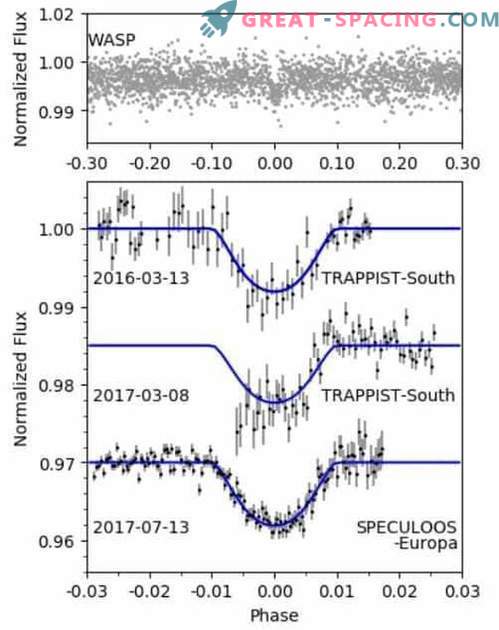
An international team of scientists was able to find a new hot jupiter performing the almost grazing transit of the host star. The exoplanet is designated WASP-174b. In size and massiveness, it resembles Jupiter, but exceeds temperature.
Grazing transit is a situation when the planet only partially crosses the disk of the native star. Such objects are important because they allow you to find additional bodies revolving around the host star. The fact is that non-found objects will violate the orbit of a grazing planet and can potentially lead to periodic changes in the transit impact parameter. This will lead to variations in transit time. Despite the discovery of hundreds of exoplanets, they managed to find only a small group of herding transits.

Photometry from WASP (top) and subsequent light curves (bottom)
For a recent survey, a wide-sector search for planets (WASP) was used, which was used to identify the light curve signal from the star WASP-174 (2006-2012). The planetary nature of the signal was confirmed by Doppler tomography using the HARPS spectrograph on a 3.6-meter telescope. Because of the grazing transit, it is difficult to pinpoint the radius of a distant world. Parameters range from 0.7-1.7 times the radius of Jupiter. The inaccuracies relate to the massiveness of the WASP-174b, which was influenced by the hot stars (6400K) and the rapid period of rotation (4.4 days). The mass limit is 1.3 masses of Jupiter.
WASP-174b rotates at a distance of 0.0555 a. e., spending 4.23 days on the orbital path. The temperature rises to 1470K. The star belongs to the F6V spectral type, and its age is 1.65 billion years. It surpasses the Sun in mass and size by 30%, and the magnitude is 11.9, which is why it is considered the weakest system among owners of hot jupiters.











































